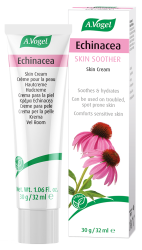An introduction to the symptoms of acne
There are a number of highly visible symptoms that characterise acne, all of which can be uncomfortable, irritating and often distressing to experience. However, it is important to recognise these symptoms so that we can identify possible triggers and be aware of complications such as scarring or the development of more intense forms of acne such as severe nodulocystic acne.
Blackheads
Blackheads are usually formed from an amalgamation of sebum oil and dead skin cells. When dead skin cells and sebum oil combine, they can form a tough plug that clogs up your pores. Blackheads get their name from the melanin contained in sebum oil. When this oil is overproduced, the dark pigment becomes oxygenated, appearing black.
If you suffer from oily skin, blackheads can be a persistent problem as you will have larger pores, making your blemish more visible. Typically, blackheads affect your T-Zone – your chin, nose and forehead although during an outbreak of acne they can also affect your back and cheeks as well.
Whiteheads
Whiteheads are very similar to blackheads but are normally considered trickier to treat. As is the case with blackheads, whiteheads are formed by a combination of sebum oil and dead skin cells, however in instances of whiteheads; the melanin contained in sebum oil is not oxygenated, giving the blemish its paler appearance. Whiteheads are normally smaller than blackheads, which can make them difficult to reach and more problematic to relieve.
Inflammation
Inflammation is normally inspired by your immune system. When your immune system becomes aware of any damage experienced by your skin cells, it will stimulate an inflammatory reaction, causing the skin to swell and become tender. This serves two purposes – the inflammatory chemicals are able to attack any pathogens and can subsequently encourage the healing process. However, a rush of inflammatory chemicals can irritate your skin even further and cause your blood vessels to dilate, giving your skin a flushed, pink appearance.
Pimples
Pimples are often confused with blackheads and whiteheads but they are very different. A pimple will appear when your sebaceous gland become infected with bacteria, such as propionibacterium which is are common cause of acne and can multiply in your pores. When your gland becomes infected, it can cause inflammation, causing the affected area to swell and pushing sebum oil and pus to the surface of the skin.
Nodules
Nodules are more commonplace in the severe nodulocystic acne variant, and appear as hardened lumps of skin on the epidermis. They can quite uncomfortable and painful to experience, even causing scarring in serious cases. Typically, they are larger than pimples or blackheads but are caused by similar factors, such as bacteria and sebum oil blocking hair follicles.
Skin cysts
Skin cysts, unlike other cysts, are noncancerous and benign, usually manifesting when the sebaceous gland has been infected. When oil becomes trapped in the sebaceous gland, it can cause a cyst to grow, usually appearing around the face or neck, although they have also been known to develop on the back and scalp as well. Sometimes they can contain keratin, a hardened protein that is present in your hair, nails and skin.
Stress
Stress is a psychological symptom of acne that is very common to experience, especially if you are self-conscious about your appearance.
It can be difficult to feel comfortable in your own skin when you are constantly aware your acne, which can then have a knock-on effect on your confidence and social life. You will feel pressured to try and get rid of your blemishes and frustrated when an acne outbreak is persisted despite your best efforts.
However, it is important that you try and control your stress levels as stress can upset your physical symptoms, exacerbating your acne.





 Looking for a sensitive skin care solution that provides moisture and hydration whilst soothing and calming troubled spot prone skin?
Looking for a sensitive skin care solution that provides moisture and hydration whilst soothing and calming troubled spot prone skin?

